South Jersey’s Ship Graveyard
New Jersey has a long and storied history of shipwrecks, with its treacherous coast claiming numerous vessels throughout the years. The state’s location along the Atlantic Ocean, combined with its many inlets and sandbars, made it a perilous place for ships to navigate.
Some of the most famous shipwrecks in New Jersey’s history include the S.S. Morro Castle, which caught fire and ran aground in 1934, the Nancy which was raced down by the British, and the Powhattan which ran around.
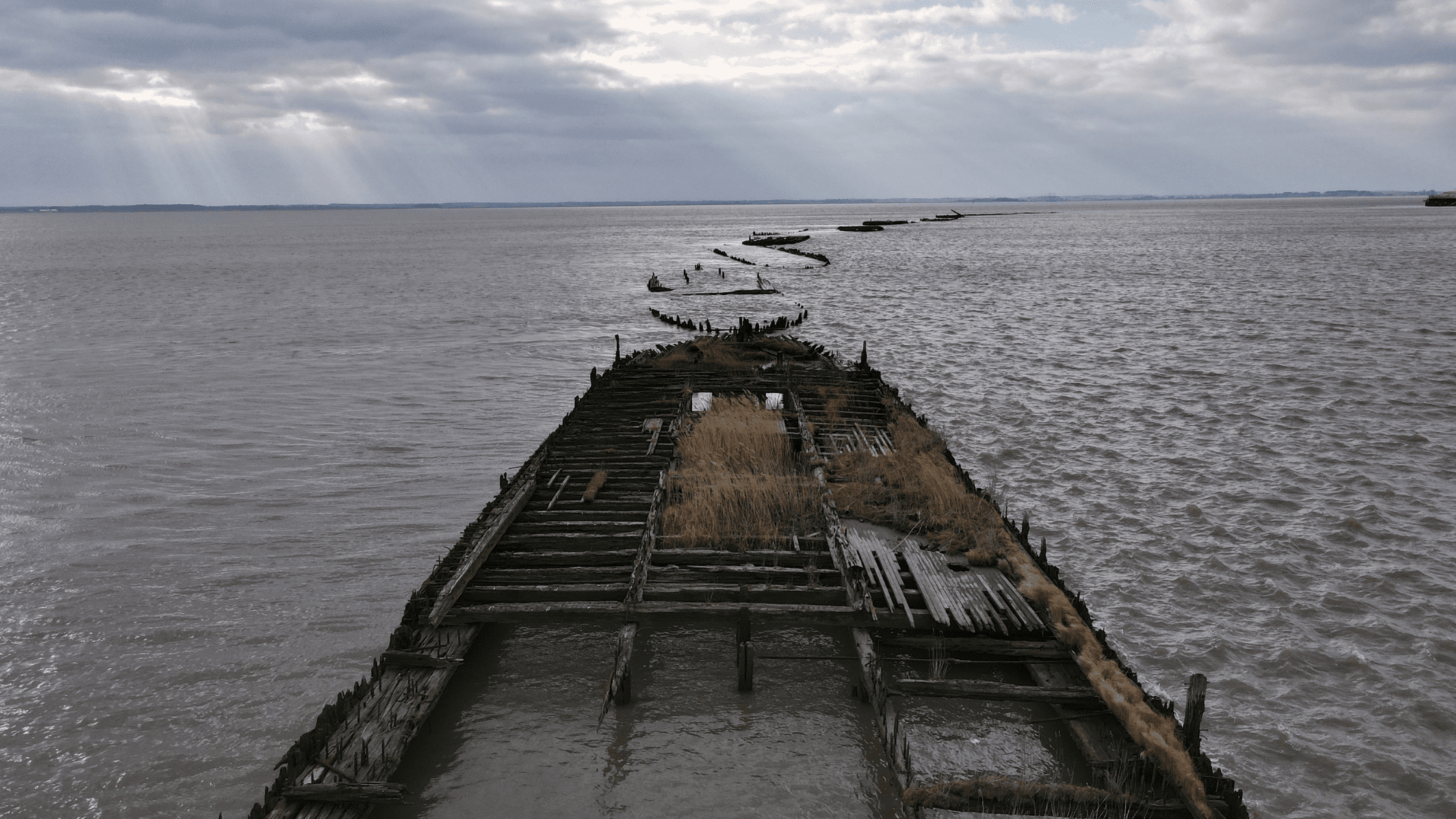 It is estimated that there are between 4,000 and 7,000 shipwrecks off the coast of New Jersey. Due to the large number of wreaks, it’s hard to document every
It is estimated that there are between 4,000 and 7,000 shipwrecks off the coast of New Jersey. Due to the large number of wreaks, it’s hard to document every
single one of them.
In researching shipwrecks in New Jersey the Wildwood Video Archive stumbled upon old drawn maps of New Jersey dating back to the 1940s that showed 18 ships that looked to be sunk in a formation.
These ships weren’t located in the Atlantic Ocean but rather in the Delaware River. This obsession with wanting to know more led to an interesting discovery, a ship graveyard.
It was the end of World War I, or as it was known at the time, the Great War and America was exhausted.
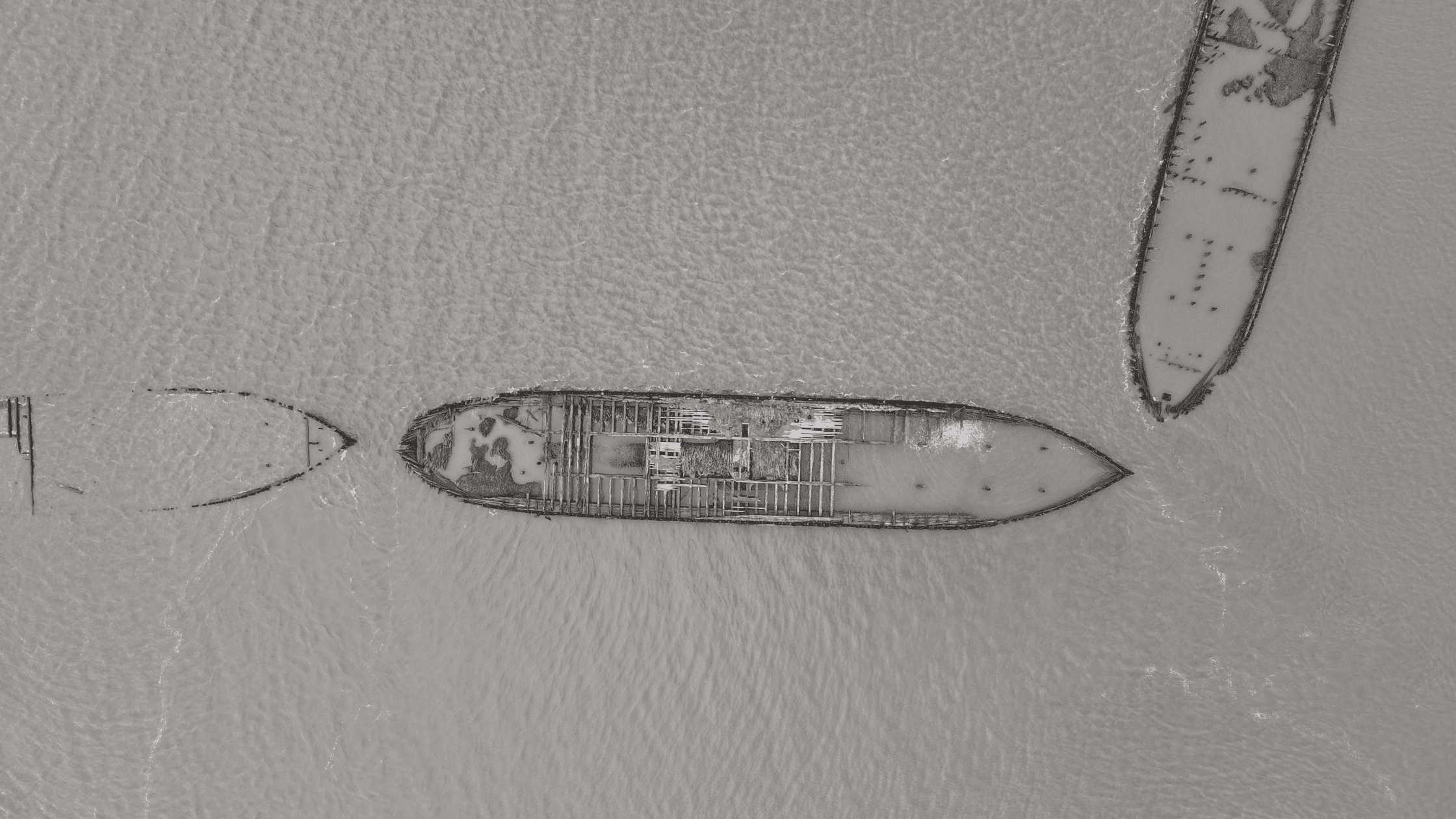
South Jersey’s Ship Graveyard
The country had emerged from the war as one of the world’s leading military and economic powers, but the transition to peacetime was not without challenges.
During the war, jobs were everywhere from making food, assembling tanks, and sewing uniforms.
But after the war, the demobilization of millions of soldiers created unemployment and inflation, leading to strikes and labor unrest.
But this story takes us to another problem prior to having soldiers on the ground.
It was early on in the War that the United States knew they had a supply chain problem. You see, Germany was using a new technique of knocking out supply chains by using U-boats.
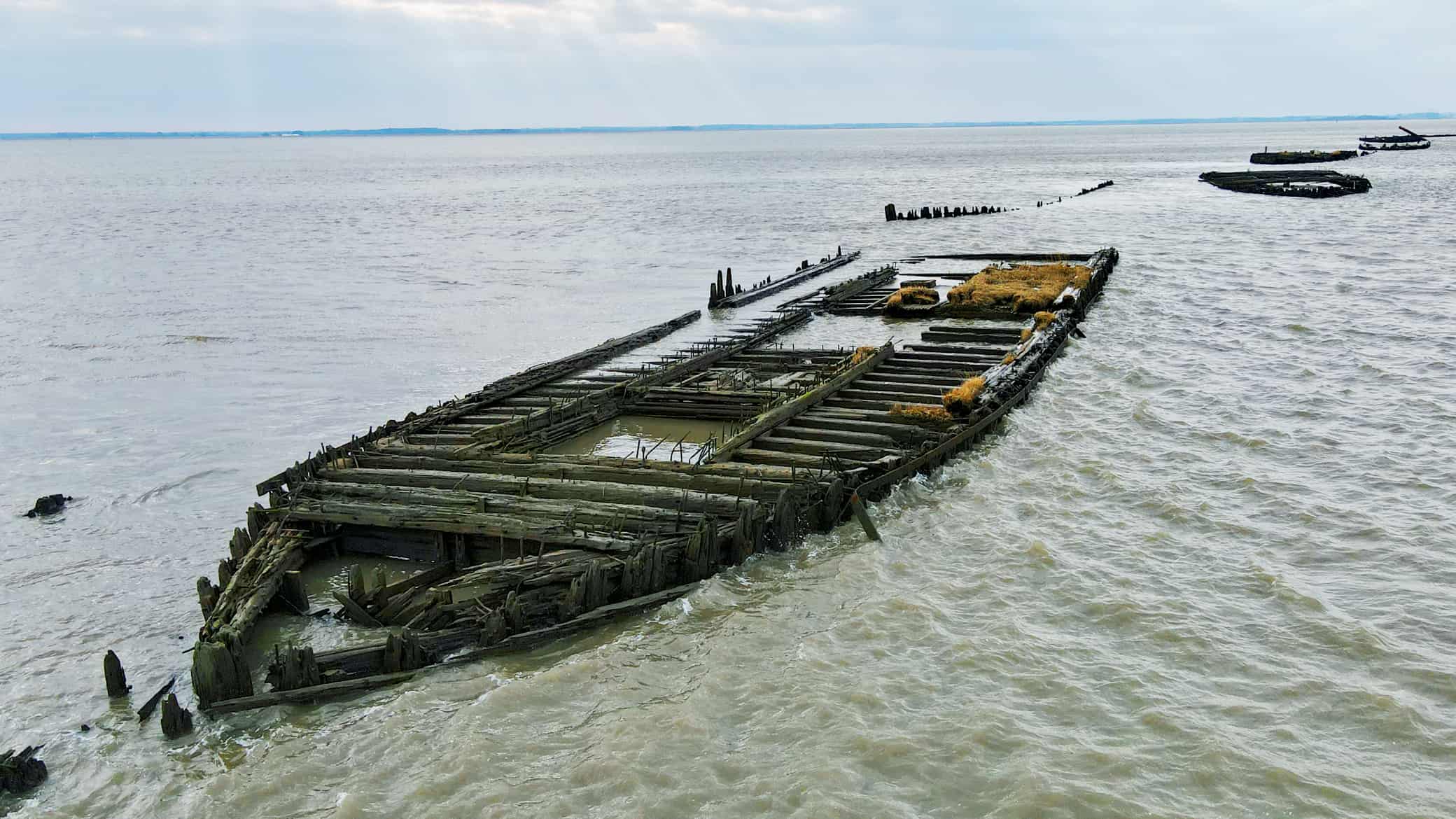
South Jersey’s Ship Graveyard
These submariners would sneak up to war ships and supply ships and destroy them before they got close to their destination.
Within ten days of President Woodrow Wilson declared war on Germany, over 122 ocean-going ships were sunk totaling over 1,250,000 tons.
Wilson knew he needed to address the shortage of ships required to transport troops and supplies to Europe so he established the Emergency Fleet Corporation.
Founded on April 16th, 1917, the corporation was run by the Shipping Board, who tasked with overseeing the project.
The Emergency Fleet Corporation was responsible for hiring shipyards across America to help build a
These shipyards would help built not only cargo ships but also troop transports.
Shipbuilders from up and down the East coast threw their hats in for these new government contracts.
Since the EFC needed these ships built quickly it decided to supplement its expanding fleet of steel cargo ships with 703 wooden steamships.
This move sparked significant debate as wood was considered outdated for large shipbuilding at the time and the use of steam engines was viewed as old technology.
Nonetheless, the wooden ships were the fastest way to get the job done.
While many different types of wooden boats were built, the most common was the Ferris Ship. Built with a length of 281 feet, 3,588 deadweight tons, and 2 boilers, they weren’t pretty but they could get the job done.
By the end of the war, the corporation had built over 200 ships, shy of 703 since the war ended soon than when the US predicted.
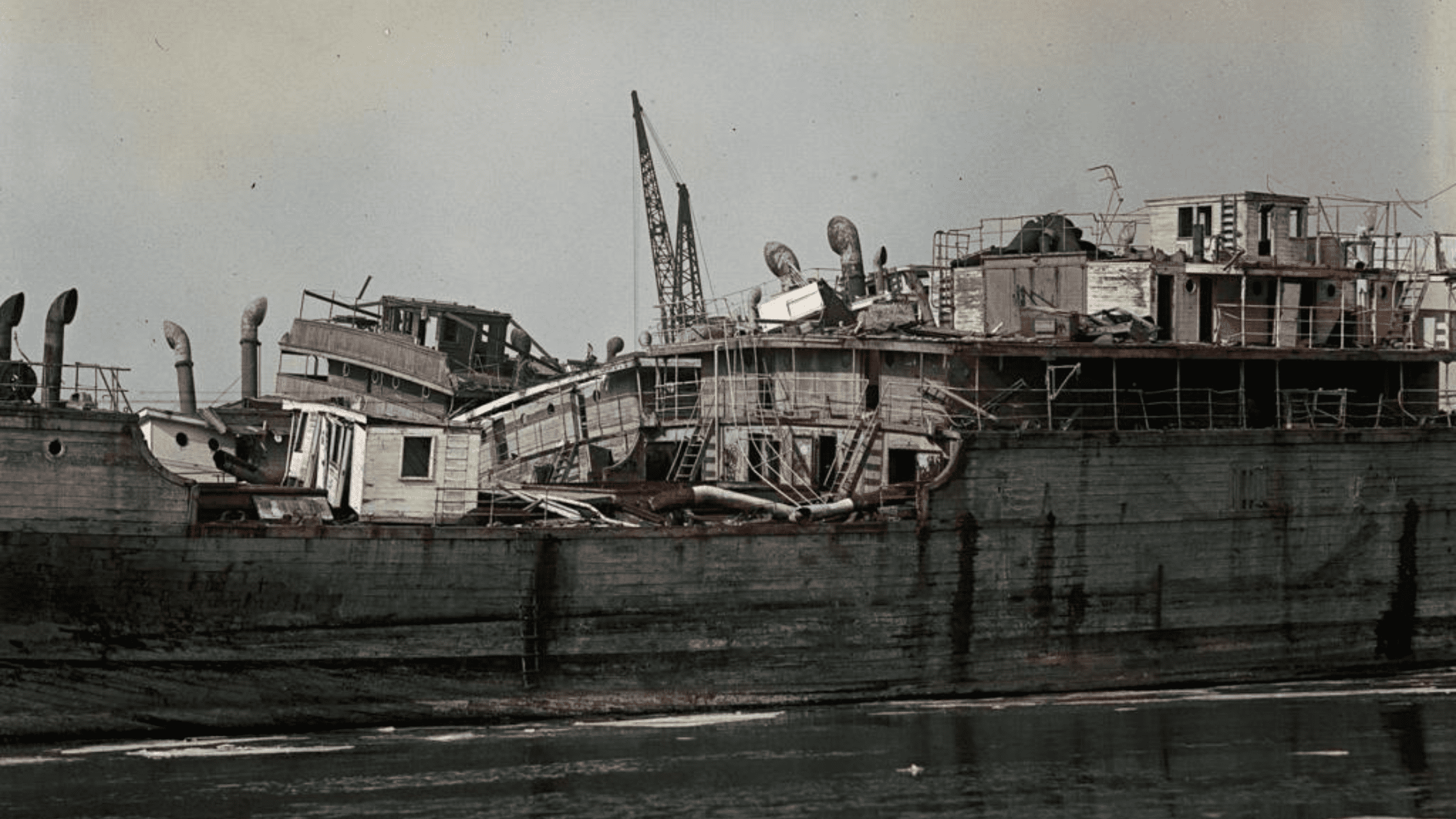
The decline in the demand for shipping, combined with the shift towards larger, more efficient steel ships, made it difficult for the wooden ships of the EFC to remain in service.
As a result, the wooden ships of the Emergency Fleet Corporation became a relic of a bygone era, representing a significant but ultimately short-lived chapter in American maritime history.
After these ships went unwanted for some time the Navy needed to get them off their hands.
Some of these ships were stripped of their important parts and destroyed while others were sold off.
Sometime after the war, eighteen of these ships were stripped of all their vital parts in Philadelphia’s Navy Yard and towed down to Salem County’s Lower Alloways Creek.
There, the ships were moored off of Stoney Point to become ship breakwaters.
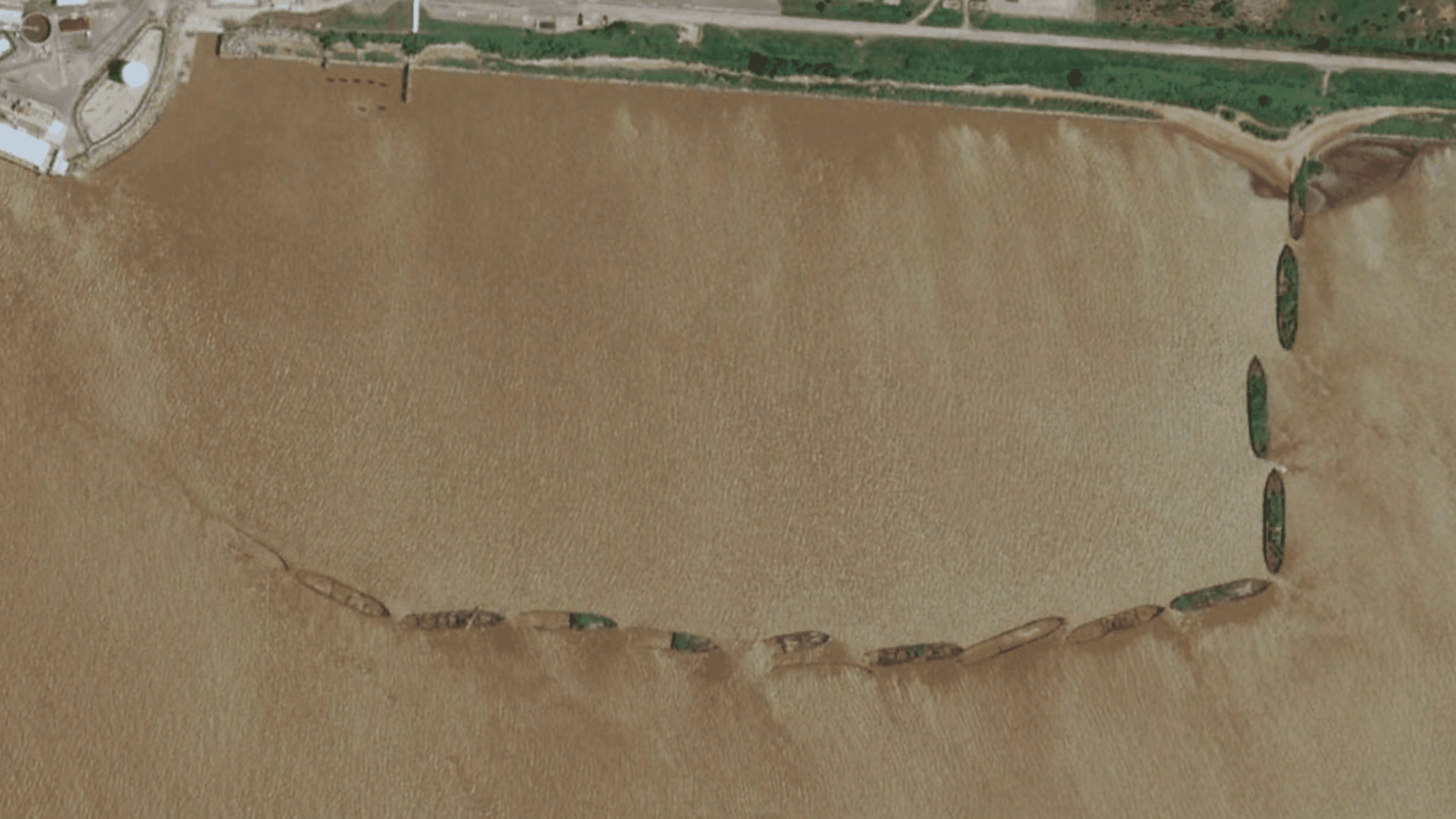
The ship breakwater acts as a barrier, reducing the amount of energy transferred from the waves to the shoreline, thereby protecting ships, boats, and other vessels anchored or moored in the vicinity. The size and shape of a ship breakwater depend on factors such as the location of the shoreline, the prevailing weather conditions, and the type of vessels that require protection.
These ships were filled in with mud rocks and sunk down into the water at Stoney Point to protect the coastline.
Fast-forward roughly 100 years since they were built and these ships, while mostly eroded, are still there breaking the waves.
What makes these ships so interesting is the fact that there isn’t much information online about them.
In the 1960s, Westinghouse announced that they planned to build two nuclear reactors at this location. Since it was far away from most major towns it was approved by the state.
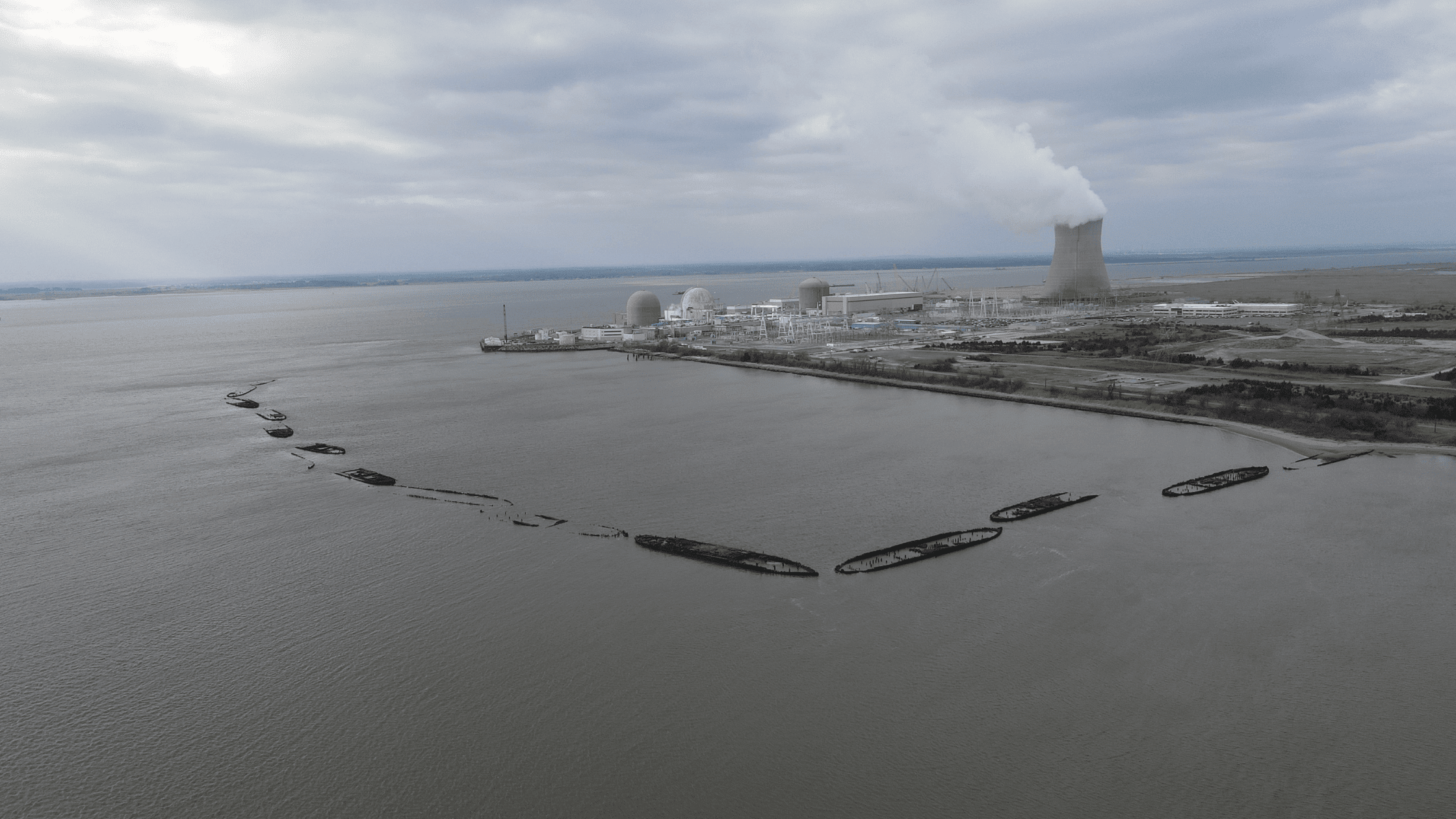
With permission from PSEG, the Wildwood Video Archive became the first people to not only film in this area but also fly our drones overhead.
A special thank you out to our Patrons on Patreon who help fund these awesome videos. If it wasn’t for them we wouldn’t have been able to film this video.
If you want to support our channel, please consider signing up to become a member by CLICKING HERE.
Below is our video tour of the ships. Another video will be released on Saturday showcasing more drone footage.
Note from PSEG – You are NOT ALLOWED to fly your drone or visit this area without permission. Trespassers will be prosecuted.
Before you watch, please consider subscribing.
